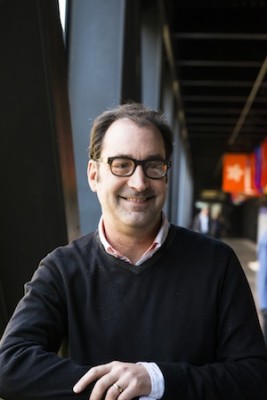Update: Shortly after the Spring 2014 term passed its half-way point, our participating students (Myspacers?) produced a new set of videos tracking their progress on the path toward creative completion.
Starting a project is never easy. And finishing it is, arguably, even harder. But let’s not underestimate the challenges involved in persisting through the obstacle course of road-blocks artists often face once they’re deep enough into a project that starting over isn’t an option and the finish line isn’t yet in sight.
This extraordinary set of videos (featured on our Myspace page) offers a snapshot of the breathtaking range of creative activity happening at Art Center on any given day.
Photography student Roman Alexander Vargas takes us deeper into his sources of inspiration (Nan Goldin, primarily) for the very personal photo essay he’s creating as he chronicles his initiation into drag queen culture.
Interaction Design student, Inae Song, delivers a dynamic illustration of the iterative process involved in redesigning an interactive digital destination for AIGA, the American professional association for design professionals. For a young designer proving her mettle, it’s hard to think of tougher crowd to please than the members of AIGA. But Song remained undaunted and produced some incredibly compelling work that plays like a tutorial in website design.
Graduate Transportation Design Student, Nish Kamath, bowed out of this step in the process and will rejoin us with a final video revealing the finished product he creates based on his research into traffic patterns in the developing world.
Each of these students defies and exceeds any and all expectations they set forth in their initial videos, leaving us rapt in anticipation of their final installations. Stay tuned.
Last October, Art Center formed an alliance with the newly relaunched Myspace platform, which had reinvented itself as a social network for creative types. Myspace’s elegant interface seemed custom designed for the Art Center community, with each user profile centered around a portfolio of images and videos that comprise the user’s identity by showcasing the evolution of imagination and innovation. In other words, if Mark Zuckerberg had been a student at Art Center, not Harvard, Facebook might have looked a lot like the current iteration of Myspace.
Because Art Center is known for its students’ enterprise and productivity, that creative rigor became the focal point for this partnership. To illustrate this dedication, we recruited four students from four different disciplines (Product Design, Graphic Design, Illustration and Film) and asked them to document their creative process over the course of the term as they complete a project. The results were as inspiring as they were fascinating, providing a panoramic view of the geyser of creativity that is Art Center.
Continue reading →



